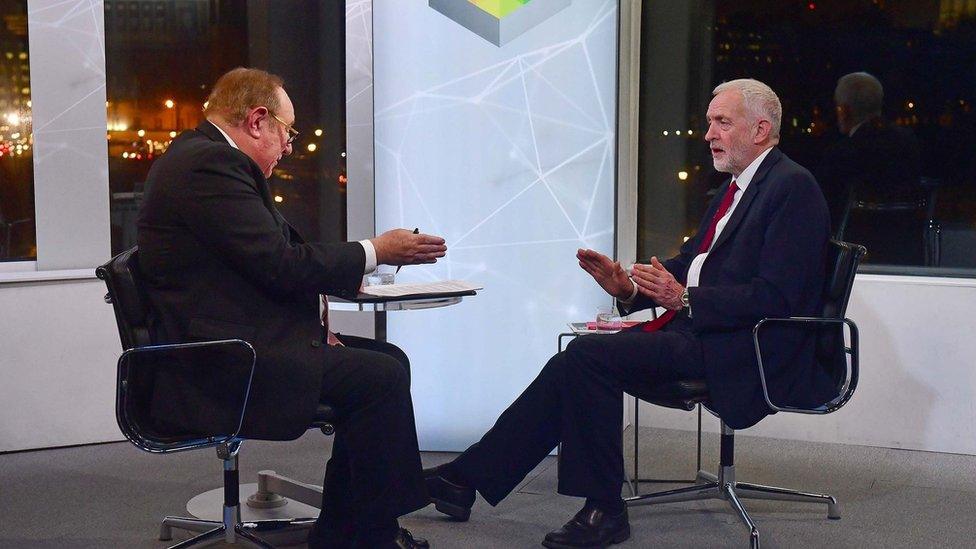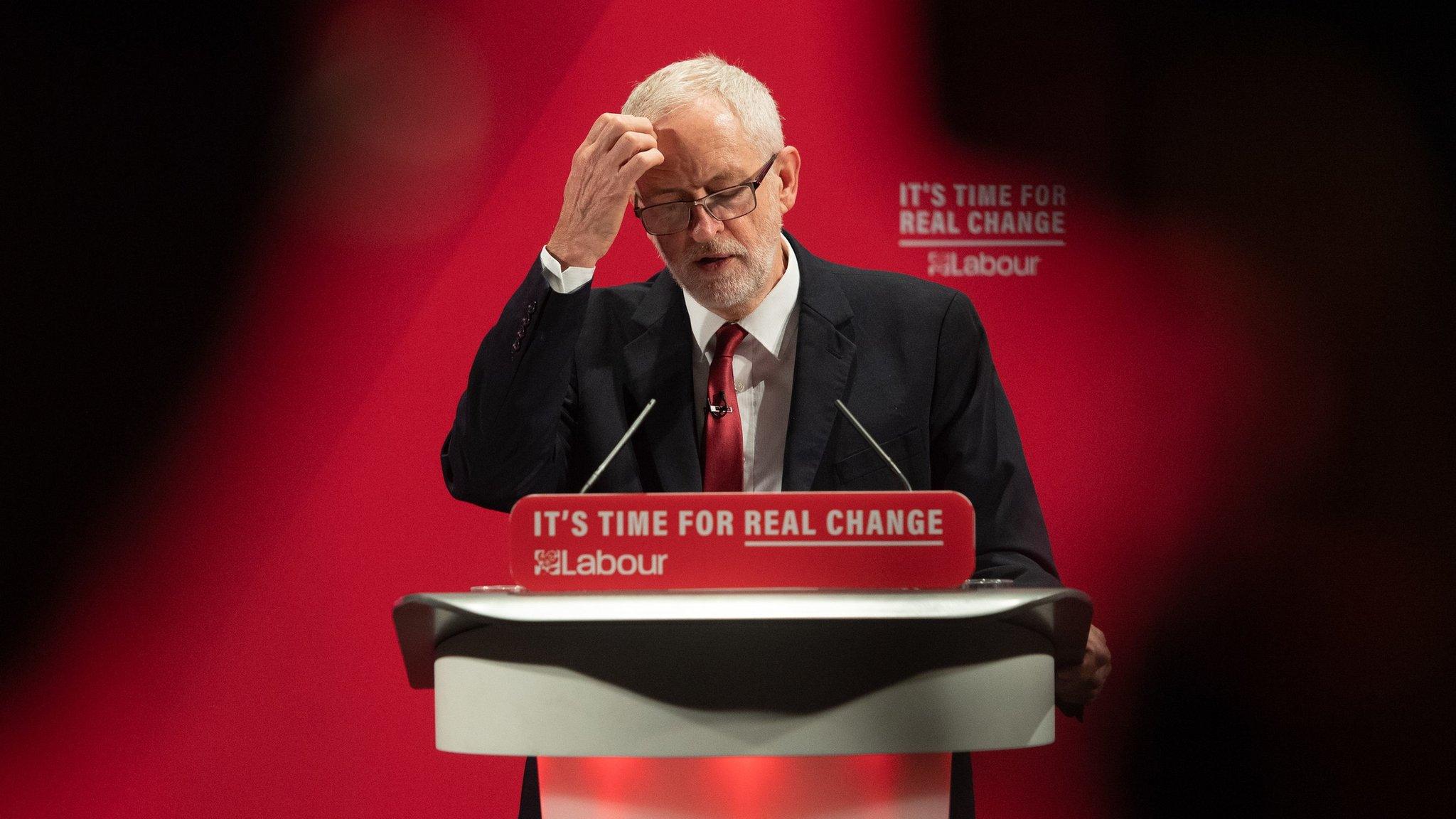General election 2019: Jeremy Corbyn interview fact-checked
- Published

Labour leader Jeremy Corbyn faced the BBC's Andrew Neil in the second of a series of special interviews with party leaders in the run-up to the election.
During the half-hour interview, he answered questions on his party's policies and record. BBC Reality Check has looked at three of his claims.
Claim: "Only those earning over £80,000 per year will see a tax increase"
Reality Check: The Labour leader was challenged over this claim by Andrew Neil, who raised Labour's plans to scrap the marriage allowance. Mr Neil said "almost two million of them are going to lose £250 and they earn a lot less than £80,000".
Everyone has a personal allowance, which is an amount they are allowed to earn before they start paying income tax - this year it is £12,500.
Marriage allowance is for a couple who are married or in a civil partnership., external If one partner has an income below £12,500, they can transfer 10% of their personal allowance to the other one, as long as they are a basic rate taxpayer.
To be a basic rate taxpayer, they would have to be earning between £12,500 and £50,000 in England, Wales and Northern Ireland and between £12,500 and £43,430 in Scotland.
That would reduce the couple's tax bill by a maximum of £250 a year.
Transferrable marriage allowance was introduced under David Cameron and started from April 2015.
HMRC says that 1,780,000 people claimed the relief in 2018-19, external at a cost of £485m. (If you're wondering why that's an average of more than £250 each, it's because you are allowed to claim for previous years back to 2015-16.)
Labour plans to remove the transferrable marriage allowance for equality reasons. This will only raise a relatively small amount of money in the scale of government spending, but would nonetheless mean that some people earning less than £80,000 a per year will pay more income tax.
Mr Corbyn responded that the people who lost the £250 relief would receive other benefits under Labour including a living wage, improved free nursery provision and properly-funded schools.
But none of those policies would directly affect their income tax rates or reliefs.
Claim: Mr Corbyn disputed Andrew Neil's claim that a pensioner with income of £14,000 a year would end up paying more in tax under Labour
Reality Check: Mr Neil gave another example: someone on a state pension - worth £8,767 - with an annuity of £4,000 and a dividend income of £2,000. That's their share of the profits of whatever companies in which their pension fund is invested.
He said that Labour's plans to tax dividends at the same rate as income tax (20% in this case) could leave some people, with a total income of less than £15,000 paying about £400 more in income tax.
Mr Corbyn disputed the figures. Under Labour's tax changes they could pay £400 more but it depends where the dividends are coming from. If they came from a stocks and shares ISA, for example, they would be tax-free (you can currently save up to £20,000 a year).
Claim: For the very top earners, "tax rates in general have gone down and the levels of inequality have gone up"
Reality Check: Mr Corbyn didn't give a timeframe here for his statement that "tax rates in general have gone down". If you look back to the 1970s, for example, the top rate of income tax then was 83% for those earning more than £140,000 (in today's money).
Income tax rates are the same today as they were in 1990-91 for both the basic rate taxpayer (20%) and the higher rate (40%).
But things are a little more complicated, since there used to be a "lower" or "starting" rate, and since 2010-2011 there has been an "additional" rate for those earning more than £150,000. That additional rate did indeed drop from 50% to 45% in 2013-14.
And those rates don't tell us anything about tax allowances or relief and National Insurance, which have changed over time.
When it comes to worsening inequality, Mr Corbyn didn't specify exactly what he meant by this.
If you look at income inequality, for example, then Office for National Statistics (ONS) figures show that it has remained relatively stable since 2010 - the year the Conservatives first came to power.

The ONS measures income inequality using something called the Gini coefficient. In this case, a coefficient of zero would mean that all households had the same income while 100 would mean that one household had all the income.
The data, external suggests that there was a considerable increase in income inequality in the 1980s, but it has very gradually declined over the past decade. Income inequality was 32.5% last year, very slightly down from the 32.7% recorded just before the 2010 election.
But this measure only looks at income, not wealth and assets. However, wealth inequality is much harder to measure because a lot of rich people do not disclose what their true wealth is.
When it comes to other areas of inequality, the data is more clear cut. For example, the ONS said last year that there been a statistically significant increase in the difference in life expectancy in England between the richest and poorest.



- Published27 November 2019
